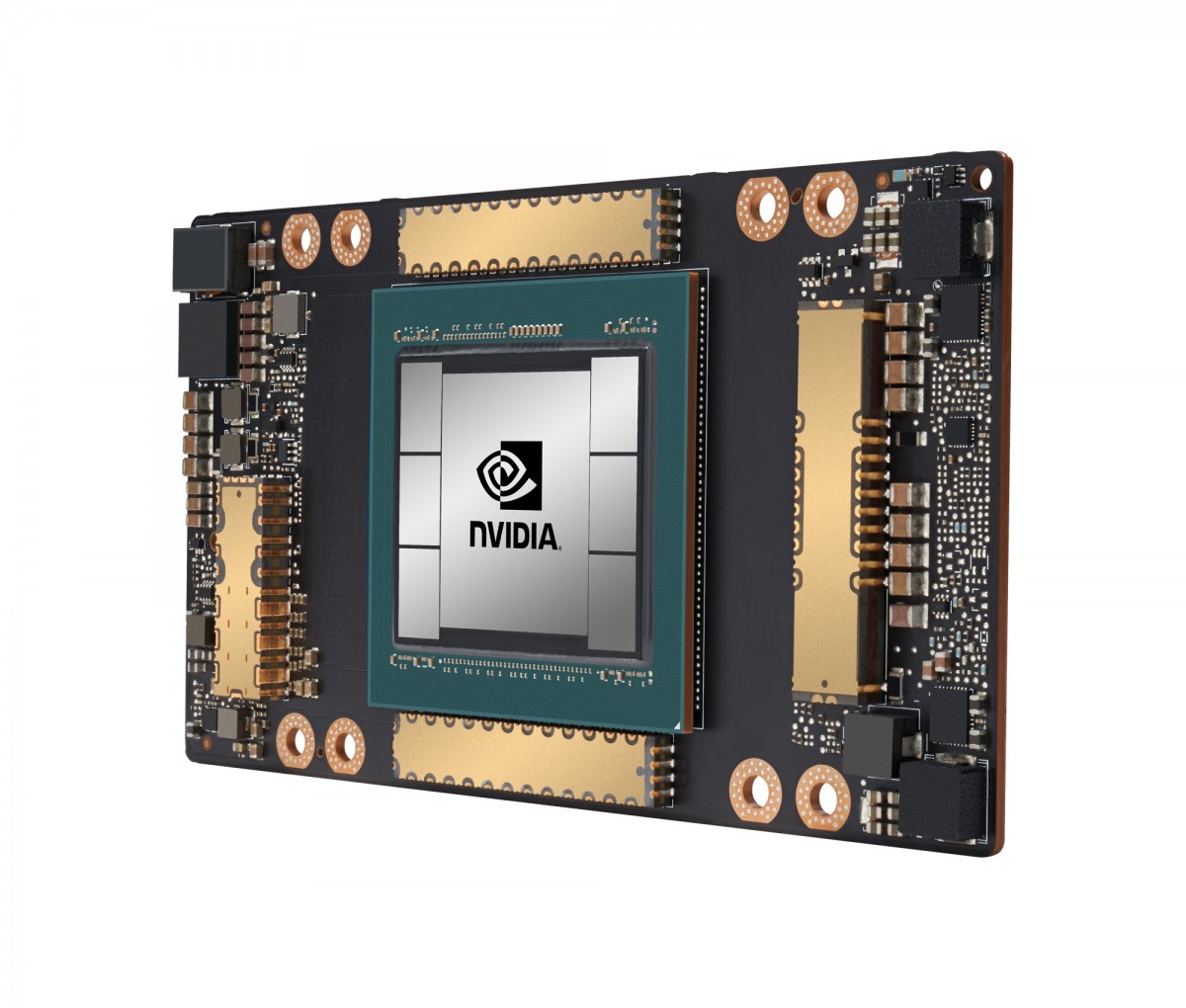The A100 draws on design breakthroughs in the NVIDIA Ampere architecture — offering the company’s largest leap in performance to date within its eight generations of GPUs — to unify AI training and inference and boost performance by up to 20x over its predecessors. A universal workload accelerator, the A100 is also built for data analytics, scientific computing and cloud graphics.
“The powerful trends of cloud computing and AI are driving a tectonic shift in data center designs so that what was once a sea of CPU-only servers is now GPU-accelerated computing,” said Jensen Huang, founder and CEO of NVIDIA. “NVIDIA A100 GPU is a 20x AI performance leap and an end-to-end machine learning accelerator — from data analytics to training to inference. For the first time, scale-up and scale-out workloads can be accelerated on one platform. NVIDIA A100 will simultaneously boost throughput and drive down the cost of data centers.”
New elastic computing technologies built into A100 make it possible to bring right-sized computing power to every job. A multi-instance GPU capability allows each A100 GPU to be partitioned into as many as seven independent instances for inferencing tasks, while third-generation NVIDIA NVLink® interconnect technology allows multiple A100 GPUs to operate as one giant GPU for ever larger training tasks.
The world’s leading cloud service providers and systems builders that expect to incorporate A100 GPUs into their offerings include: Alibaba Cloud, Amazon Web Services (AWS), Atos, Baidu Cloud, Cisco, Dell Technologies, Fujitsu, GIGABYTE, Google Cloud, H3C, Hewlett Packard Enterprise (HPE), Inspur, Lenovo, Microsoft Azure, Oracle, Quanta/QCT, Supermicro and Tencent Cloud.
Immediate Adoption Worldwide
Among the first to tap into the power of NVIDIA A100 GPUs is Microsoft, which will take advantage of their performance and scalability.
“Microsoft trained Turing NLG, the largest language model in the world, using the current generation of NVIDIA GPUs,” said Mikhail Parakhin, corporate vice president at Microsoft. “We will train dramatically bigger AI models using thousands of NVIDIA’s new generation of A100 GPUs in Azure at scale to push the state of the art on language, speech, vision and multi-modality.”
DoorDash, an on-demand food platform serving as a lifeline to restaurants during the pandemic, notes the importance of having a flexible AI infrastructure.
“Modern and complex AI training and inference workloads that require a large amount of data can benefit from state-of-the-art technology like NVIDIA A100 GPUs, which help reduce model training time and speed up the machine learning development process,” said Gary Ren, machine learning engineer at DoorDash. “In addition, using cloud-based GPU clusters gives us newfound flexibility to scale up or down as needed, helping to improve efficiency, simplify our operations and save costs."
Other early adopters include national laboratories and some of the world’s leading higher education and research institutions, each using A100 to power their next-generation supercomputers. They include:
- Indiana University, in the U.S., whose Big Red 200 supercomputer is based on HPE’s Cray Shasta system, will support scientific and medical research, and advanced research in AI, machine learning and data analytics.
- Jülich Supercomputing Centre, in Germany, whose JUWELS booster system being built by Atos is designed for extreme computing power and AI tasks.
- Karlsruhe Institute of Technology, in Germany, which is building its HoreKa supercomputer with Lenovo, will be able to carry out significantly larger multi-scale simulations in the field of materials sciences, earth system sciences, engineering for energy and mobility research, and particle and astroparticle physics.
- Max Planck Computing and Data Facility, in Germany, with its next-generation supercomputer Raven built by Lenovo, provides high-level support for the development, optimization, analysis and visualization of high-performance-computing applications to Max Planck Institutes.
- The U.S. Department of Energy’s National Energy Research Scientific Computing Center, located at Lawrence Berkeley National Laboratory, which is building its next-generation supercomputer Perlmutter based on HPE’s Cray Shasta system to support extreme-scale science and develop new energy sources, improve energy efficiency and discover new materials.
Five Breakthroughs of A100
The NVIDIA A100 GPU is a technical design breakthrough fueled by five key innovations:
- NVIDIA Ampere architecture — At the heart of A100 is the NVIDIA Ampere GPU architecture, which contains more than 54 billion transistors, making it the world’s largest 7-nanometer processor.
- Third-generation Tensor Cores with TF32 — NVIDIA’s widely adopted Tensor Cores are now more flexible, faster and easier to use. Their expanded capabilities include new TF32 for AI, which allows for up to 20x the AI performance of FP32 precision, without any code changes. In addition, Tensor Cores now support FP64, delivering up to 2.5x more compute than the previous generation for HPC applications.
- Multi-instance GPU — MIG, a new technical feature, enables a single A100 GPU to be partitioned into as many as seven separate GPUs so it can deliver varying degrees of compute for jobs of different sizes, providing optimal utilization and maximizing return on investment.
- Third-generation NVIDIA NVLink — Doubles the high-speed connectivity between GPUs to provide efficient performance scaling in a server.
- Structural sparsity — This new efficiency technique harnesses the inherently sparse nature of AI math to double performance.
Together, these new features make the NVIDIA A100 ideal for diverse, demanding workloads, including AI training and inference as well as scientific simulation, conversational AI, recommender systems, genomics, high-performance data analytics, seismic modeling and financial forecasting.




